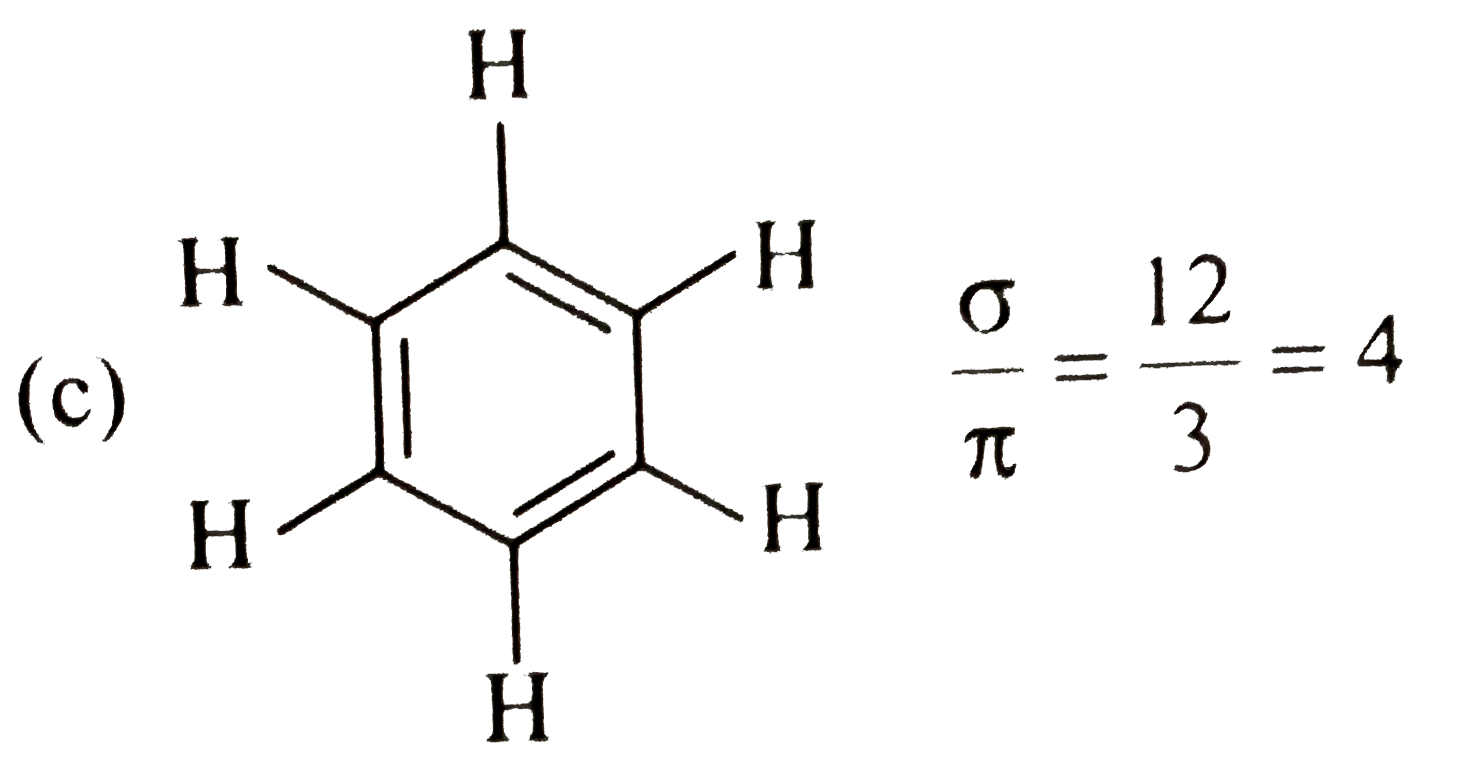A: tetracynomethance, B: Carbon dioxide , C: Benzene, D: 1,3butadiene
Ratio of sandp bond is in order
A=B<C<D
A=B<D<C
A=B=C=D
C<D<A<B
The correct Answer is:a
(a) Tetracyanomethane

(b) O=C=Oσπ=22=1
(c) 
(d) 
Topper's Solved these Questions
- CHEMICAL BONDING AND MOLECULAR STRUCTUREBOOK - A2ZCHAPTER - CHEMICAL BONDING AND MOLECULAR STRUCTUREEXERCISE - Vsepr Theory And Hybridisation
46 Videos
- CHEMICAL BONDING AND MOLECULAR STRUCTUREBOOK - A2ZCHAPTER - CHEMICAL BONDING AND MOLECULAR STRUCTUREEXERCISE - Molecular Orbitial Theory
42 Videos
- CHEMICAL BONDING AND MOLECULAR STRUCTUREBOOK - A2ZCHAPTER - CHEMICAL BONDING AND MOLECULAR STRUCTUREEXERCISE - Dipole Moment
28 Videos
- ATOMIC STRUCTUREBOOK - A2ZCHAPTER - ATOMIC STRUCTUREEXERCISE - Section D - Chapter End Test
30 Videos
- CHEMICAL EQUILIBRIUMBOOK - A2ZCHAPTER - CHEMICAL EQUILIBRIUMEXERCISE - Section D - Chapter End Test
30 Videos
Similar Questions
Knowledge Check
For compounds ,
A : Tetracuanoethern
B : Carbon dioxide
C: Benzene
D : 1 , 3-Butaidene .
Ratio of σ and π bonds is in order :AA: TetracynoetheneBB: Carbon dioxideCC:BenzeneDD , 1, 3 -ButadieneA:tetracyanomethane B:carbondioxide
C:Benzene C:1,3-But-di-ene
Ratio of σandπ bonds is in order:AA=B<C<DBA=B<D<CCA=B=C=DDC<C<A<BThe C-C bond order in benzene is :
A1B2C1.5D1.3
The carbon-carbon bond order in benzene is
View SolutionConsider the following compounds
A. Chloroethene B. Benzene
C. 1,3-butadiene D. 1,3,5-hexatriene
All the carbon atoms are sp2 hybridised in
View SolutionAssertion : The central carbon−carbon bond in 1,3−butadiene is shorter than n-butane.
Reason : In butadiene the central bond has sp2−sp2 nature whereas in butane it is sp3−sp3.
View SolutionConsider the following compounds
(i) Chloroethane (ii) Benzene (iii) 1,3-butadiene (iv) 1,3,5-hexatriene
All the carbon atoms are sp2 hybridized in
View SolutionWhich of the following gases are responsible for the greenhouse gas effect on Earth?
A. Water Vapour and Carbon dioxide
B. Carbon dioxide and Nitrogen
C. Carbon dioxide and Methane
D. Ozone and Methane
View Solution
